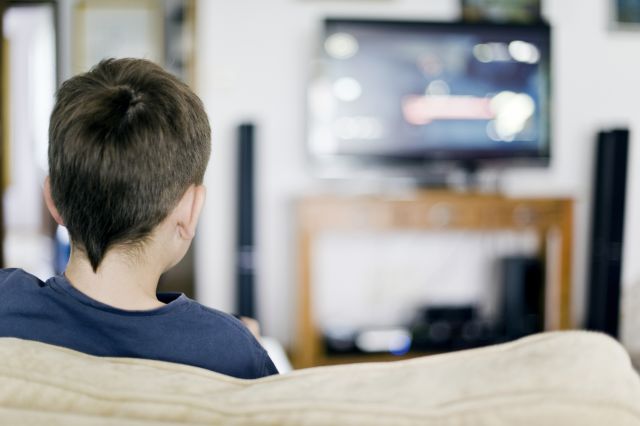Updated on January 16, 2025.
Between televisions, tablets, computers, and smart phones, children ages 8 to 12 years spend an average of four to six hours a day looking at screens, according to the American Academy of Child & Adolescent Psychiatry. For teenagers, it’s up to nine hours each day.
During this time, many kids are exposed to virtual violence, or violence that’s not experienced physically but still leaves a psychological impact. This brutality includes a wide variety of violent images and sounds, from gunplay in video games to TV news stories about wars and natural disasters. It’s not limited to acts of physical aggression, either. Virtual violence can also include verbal hostility, such as threats and hate speech.
The near-omnipresence of screens at almost every age means kids can absorb a non-stop stream of virtual violence. This overexposure can lead to mental and physical health issues, which may pursue them into adulthood.
How virtual violence affects kids
Studies have long suggested that virtual violence can feel real for many children. It may lead them to become fearful, anxious, or depressed. They may begin to lose sleep, have nightmares, or develop eating or weight issues.
Some children may begin to believe that anger and violent behavior are acceptable ways of responding to normal events. Research suggests that excess time spent watching television or playing violent video games is related to real-world aggression, such as fights and bullying.
What parents and caregivers can do
Kids who grow up in supportive environments may be less affected by virtual violence, and have a better understanding that violence is morally wrong. With that in mind, here are five ways you can encourage and enforce healthy media habits.
Check out what your child is watching
To learn about the violence in your child’s favorite games or television shows, it’s a wise idea to view or play them first-hand. Many experts urge parents to co-play and co-watch so they can evaluate media and determine if it’s too violent or sexually mature.
While some violent content may be appropriate depending on a child’s age, the American Academy of Pediatrics (AAP) recommends avoiding it altogether for kids ages 6 years and under, as they likely won’t understand what they see.
For additional guidance, you may want to explore Common Sense Media, a renowned independent organization that reviews and rates media meant for children and adolescents.
Implement screen-free areas and monitor usage
Parents and caregivers should be mindful when it comes to television and screen placement at home. Leave TVs out of bedrooms. Turn off all screens during dinner and other family events. Always make sure screen time ends at least 60 minutes before bedtime.
Consider time limits
Given the wide array of available content and different kinds of potential interactions, experts, the AAP emphasizes focusing on the quality of the content itself, co-viewing whenever possible, and discussing what you see. The group’s customizable Family Media Plan can give you suggestions and help you manage media use in your home.
That said, it’s generally accepted that screentime has very little value for babies and toddlers. For those age 2 and under, the AAP advises significantly limiting screen time, or choosing simple screen activities requiring parental guidance, such as a video call with a relative.
For children between 2 and 5 years old, they recommend no more than one hour of screen use each day. Kids should use free time for other activities necessary to healthy development, like play, reading, and spending time with family.
Use the V-chip on your television
Since 2000, all televisions larger than 13 inches sold in the U.S. have come installed with a V-chip, a device that allows parents to restrict what their child sees. Every TV show has a rating based on violence, sex, and language. The V-chip monitors and interprets the rating code when deciding to block the show from appearing on your television.
Encourage other activities
Time spent sitting with a screen doesn’t allow children to move their bodies or explore the physical world. Instead of remaining still with a tablet or in front of a TV, head outdoors, play a sport, try a new hobby, or read a book with your child. It will help them learn social and emotional skills that can help counter the violence they absorb on screens.







